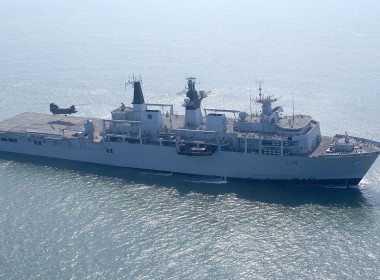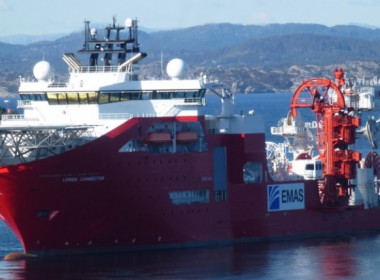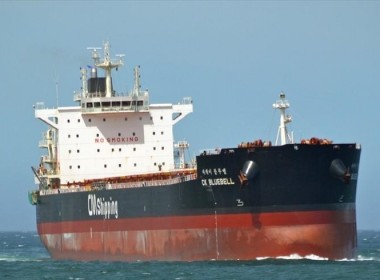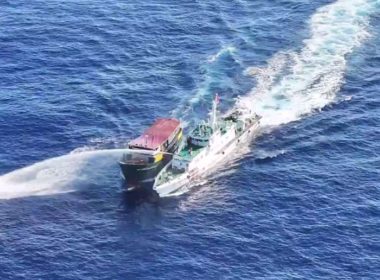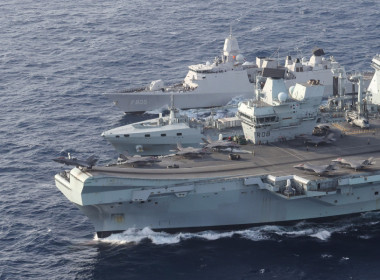OPINION | What should Australia be doing about the South China Sea?

It’s a mark of our turbulent times that China’s dangerous and illegal actions against the Philippines at the Second Thomas Shoal currently only sit in the second tier of international security headaches confronting the United States and allies such as Australia.
It’s worth stating the obvious upfront: Australia is not central to the disputes in the South China Sea. In the current crisis, only three countries are: China (the belligerent party), the Philippines (the victim of bullying and coercion), and the United States (the Philippines’ sole ally).
Yet the dangerous situation engages Australia’s interests. China is flouting international law in seeking to prevent the Philippines from resupplying its outpost, the Philippine Navy landing ship/outpost BRP Sierra Madre. This is the prime example of IndoPacom Commander Admiral Aquilino’s recent assessment that China has “become increasingly aggressive and emboldened”.
“Australia’s relationship with the Philippines is currently its most valuable way of influencing the situation.”
China has been harassing the resupply of Sierra Madre for years, but three changes have brought about a new phase in the conflict. First, China’s intensified use of water cannon has injured several Philippine Navy personnel. Second, visibility of such incidents has increased – due to both more international monitoring and the Philippine Coast Guard’s new transparency strategy.
Finally, Beijing has ramped up propaganda explicitly depicting the Philippines as the troublemaker, a shift from previous narratives that mostly blamed tensions on American interference.
In March, Australia was among several countries to register concerns about China’s destabilising actions. Australian statements of this nature about the South China Sea are nothing new, but this one was unusually explicit in attributing responsibility to China for its “pattern of deeply concerning behaviour”. While less explicit in calling out China as the belligerent party, Australian Foreign Minister Penny Wong’s speech at the ASEAN–Australia Special Summit also sounded alarm bells about the risk of coercion and conflict.
Beyond expressing concern, and encouraging others to do likewise (Hello, Vietnam) in the hope of deterring China, Australia’s relationship with the Philippines is currently its most valuable way of influencing the situation. Giving Philippines President Ferdinand Marcos Jr the platform to address the Australian parliament was a strong signal of support for Manila, as was elevating the relationship to a strategic partnership and announcing new maritime cooperation.
It is worth noting that a greater emphasis on bilateral ties with the Philippines is a shift in Australian policy, enabled by the Marcos administration’s willingness to assert its sovereignty. This sharp contrast to the former Duterte administration, which resiled from the 2016 arbitral ruling made under the UN Convention on the Law of the Sea, adds to the case of analysts such as Euan Graham who argue Canberra should favour a bilateral rather than an ASEAN-centred approach in its regional engagement.
Manila’s eagerness to seek the support of extra-regional countries is reflected in the upcoming US-Japan-Australia-Philippines combined military exercise to be held in the South China Sea (presumably within the Philippines Exclusive Economic Zone).
Yet there are limits to the role that Australia has sought to carve out for itself in the South China Sea. This has often, wrongly, been reduced to the question of FONOPS – Freedom of Navigation Operations – which Australia has never conducted, despite US requests.
“Beijing’s game is to steadily erode the status quo, knowing that time is on its side, and placing the burden of escalation on the Philippines, and by extension, the United States.”
But other more important signs suggest that Australia is not positioning itself at the forefront. Australia-Philippines joint maritime patrols were floated publicly by both sides for almost a year before they were held, just once so far.
And while the US-Japan-Philippines trilateral has flourished, with a leaders’ summit to be held this month, trilaterals involving Australia have been slower to take shape. Though some observers argue Australia should conduct patrols or join a show of force near Second Thomas Shoal, it’s hard to imagine this, given Canberra’s cautiousness.
And although Australia has traditionally been the Philippines’ second-most important defence partner after the United States, this partnership has historically not been pivoted towards external security issues such as the South China Sea.
Australia’s defence cooperation with the Philippines has traditionally focused on domestic security. When it comes to support for the Philippine Coast Guard – which is the service on the frontline in the South China Sea – Australia’s support is much less substantial.
As Australia thinks through the South China Sea issue, avoiding escalation and preventing conflict is rightly front of mind. Yet this should not be its only prism for viewing this crisis. Beijing’s game is to steadily erode the status quo, knowing that time is on its side, and placing the burden of escalation on the Philippines, and by extension, the United States.
Beijing probably bets that at some point – whether under the tail-end of the Biden administration or under Trump – the United States will blink. It has a playbook: in 2012, when China seized Scarborough Shoal from the Philippines, the then Obama administration failed to meaningfully back its ally. A repeat would damage perceptions of US staying power in Asia and strengthen the hand of fatalists who believe China’s hegemony is inevitable.
Sierra Madre – a Second World War-era vessel – has been rusting for 25 years. A big storm will probably wash it away one day. Without carefully planned and coordinated action by Washington and Manila, the Philippines is likely to lose its outpost. Canberra should be focusing on what it can contribute to prevent this scenario.


